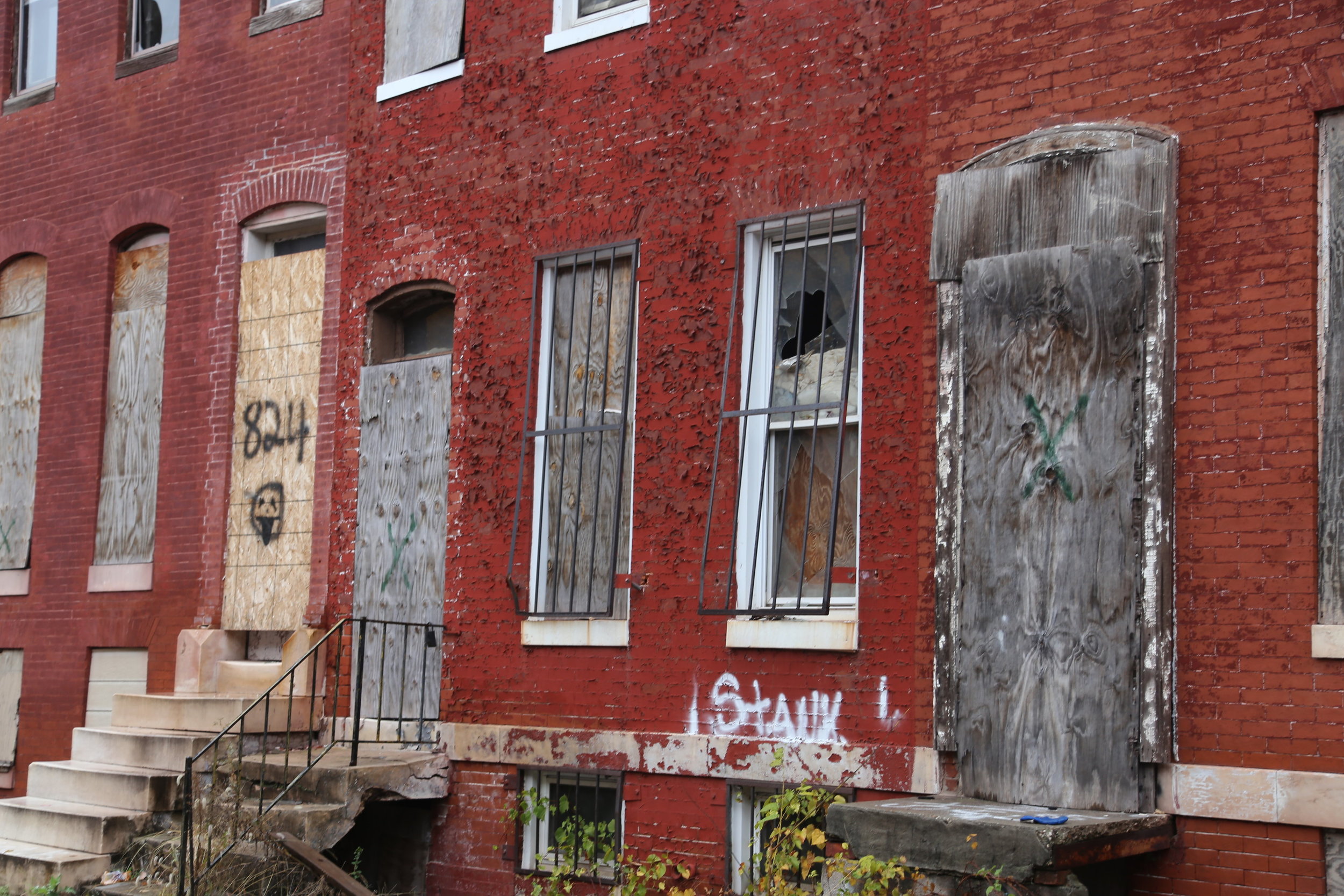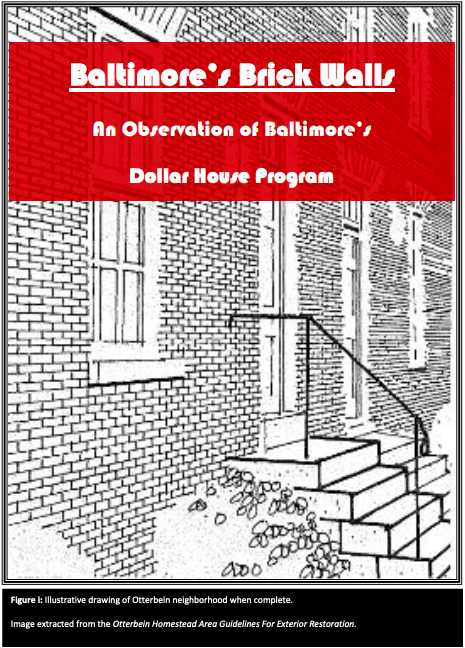Recently, Baltimore City Council President Nick Mosby released a housing package including a reboot of the 1970’s Dollar House program (The Urban Homestead Demonstration program). Baltimore was one of the cities selected for the initial pilot by the federal government to offer houses for sale for a dollar along with funds and a process for rehabilitation. The participating cities had to develop a framework for the program based on the availability of houses, the “market”, and purchaser interest. Baltimore initially selected clusters of properties in Barre Circle, Otterbein, and Stirling Street. According to Baltimore’s Brick Walls: An Observation Of Baltimore’s Dollar House Program (2015), the houses offered for sale were “ from the tax-delinquent properties and other properties acquired by the city…”(60). The location of Barre Circle and Otterbein seem to indicate the city had previously acquired those homes as a part of road construction or other planned Urban Renewal Projects.
The Dollar House program intended “..to help stimulate interest to those who could afford it back into the city with the aid of low-interest loans, assisting them in homeownership within failing areas of a city..”( Baltimore’s Brick Walls, 7). It is seen as a successful housing program. So much so there have been calls for several decades to bring it back. Mayor Stephanie Rawlings-Blake responded to these calls by creating the “Vacants to Value” program, which followed the Project SCOPE and Project 5000 programs. One of the reasons that Vacants To Value (V2V) does not share the “success” of the Dollar House program for individuals is because it did not come with the same federal funding nor programatic support. V2V also seems to be designed for developers, not people interested in buying a home in Baltimore to live in. In fact, more than half of the V2V settlements in the last decade were small or non-profit developers. Due to failures of programs like Project 5000, SCOPE, V2V and the unabated racism in real property laws and private sector policies (inflated tax assessments, tax sale, subprime lending, disinvestment, etc…) Baltimore is a city where more than 50% of renters are “housing insecure”, paying 30% or more of their income in housing cost (The Double Crisis, 2) and the loss of more than 2000 low to moderately affordable housing units since the late 1990’s is an “acceptable” price to pay for new development (The Abell Report, 2007).
Cover of Baltimore’s Brick Walls
In response to falling Black homeownership numbers and increased housing insecurity due to the economic pressure exacerbated by COVID 19, Council President Mosby is proposing to use $200 million of the $600+ million in American Rescue Act funds Baltimore is slated to receive to bring back the Dollar House program as the Baltimore City Urban Homesteading Program as well as launch a Baltimore City Home Repairs Grant Program and Baltimore City Senior Homeowners Grant Program.
Ad for Interview with Council President Mosby on the Dollar House Program
Upon reviewing the proposed legislation and listening to Council President Mosby’s interview with Madison Mason, there are four main issues with this legislation that must be addressed:
The eligibility criteria for the programs don’t match with the residents the bill states redress should be given because of racist policies.
Suggested solution: Instead of solely using the “Legacy Resident” and income criteria, eligibility should also require:
Resident has experienced a displacement resulting from mortgage, reverse mortgage, tax sale, ground rent foreclosure, lease or contract loan eviction, eminent domain or condemnation action since age 18, or
Resident has interest in an heirs property with a tangled title or unresolved estate administration action
2. There isn't enough specificity to ensure that the houses made available through this program will be affordable to those residents that Council President Mosby states the Dollar House Program is designed to help.
Suggested solution: The houses made available should be those with a total renovation cost of $175,000 or less.
3. The definition of “Designated Impact Investment Neighborhoods” puts the focus on developing around “assets” and “revitalization efforts” for investors not based on community needs.
Suggested solution: The neighborhood eligibility should be any neighborhood that was redlined (or yellow lined) and meets any three or more of the following criteria:
Vacancy rate of 15% or more
Residential Tax Lien Certificates Sales 10% or more
SDAT Neighborhood Subset has more than 50% rental housing (thus neighborhood classed as Rental Dwelling)
Lost 500 or more public housing units since 1990
Number of Demolition Permits greater than 20 for each 1000 residential units
Median Price of Houses sold $75,000 or less
Affordability Index of greater than 30%
4. The ability of participants to find lenders to provide quality mortgages will be key to their ability to access the grant.
Suggested solution: Identify a set of local banks and lenders with a demonstrated practice of equitable mortgage lending to act as preferred lenders for this program who will provide low interest and cost loans to participants that include a forgivable booster grant of between $25,000 (for renovations of $125,000 or less) and $50,000 (for renovations above $125,000).
There are a few other concerns with these bills. For instance there are programs like LIGHT and HUBS that could be expanded instead of recreated by the proposed Home Repair Grant program. And, why is the Senior Home Owners Grant program limited to 5k in funding for each participant? Also, why can’t a Senior homeowner redeem their home’s Ground Rent as a part of this program?
As written these bills offer an opportunity to “lift all boats” but in reality the people in canoes, dinghies or floating in the water on their backs will be drowned by the rising waters created. There are ways as suggested (and many more) to make these bills more than an opportunity, but to provide repair of the damage done historically.
We acknowledge that the legacy and current realities of racism in housing and community development law, policy and practice can’t be addressed by one program with a 200 million dollar budget so we have begun to organize and mobilize to develop a policy platform for reparations for Black Land Ownership and Sovereignty. An initial version can be viewed here.
Further, we propose a Single Payer Rehab Program. This program aims to provide a regenerative and sustainable option for equitable housing redevelopment in Baltimore. To learn more feel free to review the 4Points Comparison on Single Payer Rehab program, click here. Feel free to leave comment in the document, we would like to hear from interested parties.







